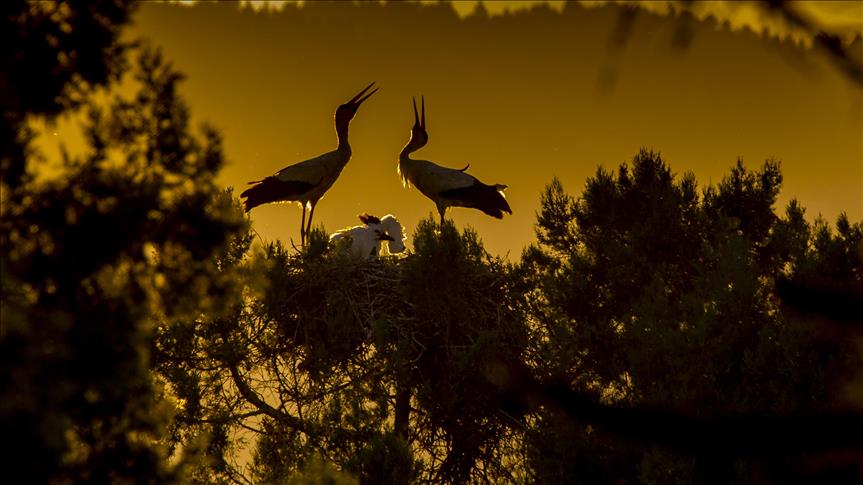In India’s Assam, villagers work to protect rare stork
Women in Assam State strive to protect endangered greater adjutant stork, only 1,800 of which are believed to exist

India
By Abdul Gani
GUWAHATI, India
A group of women in a small village in India’s Assam State are on a mission to safeguard a rare species of bird.
At a time when wildlife-related crimes are on the rise across the country, these women -- most of whom are illiterate -- have launched a movement aimed at protecting the Greater Adjutant Stork (Leptoptilos Dubius).
The stork, known locally as the "Hargila", is considered an endangered species by the International Union for Conservation of Nature (IUCN).
"We have realized the value of this bird species. It is very important to our ecology," Charu Das, one of the women involved in the project, told Anadolu Agency. "We are working to increase the population of these birds, which we regard as our family members."
The group consists of about 70 women who have collectively dubbed themselves the "Hargila Army".
According to a recent survey, there are less than 1,200 greater adjutant storks in the world, some 80 percent of which can be found in Assam State.
The IUCN, for its part, estimates the total population of greater adjutant storks at between 1,200 and 1,800.
The IUCN, the world’s oldest and largest global environmental protection network, says that around 800 birds can be found in Assam State and at least 156 in Bihar State, while another 200 can be found in Cambodia.
Villagers used to cut down the trees in which the storks nested due to a lack of awareness and superstition, which caused many newborn and juvenile stork chicks to perish.
"Earlier, the villagers did not realize the importance of this bird species. Many thought that this bird brings ill luck or similar things," Das said. "But now, we are more aware. Everybody in the village is working for conservation -- not just of the storks, but for other birds and animals as well."
The transformation can be largely attributed to one person: Purnima Devi Barman, a conservationist biologist, who came to the village as a student to do her PhD on the greater adjutant stork.
She was taken aback when she saw the plight of the bird and decided to work for its conservation.
"I came to the village in 2008. The scenario was very pathetic for the birds. The villagers did not want to see the birds in their areas," Barman told Anadolu Agency. "They thought that, as carnivorous birds, they would bring carcasses and other rotten stuff. So they would cut down the trees where these birds used to nest."
At first, it was difficult for Barman to make the villagers understand the storks’ importance.
"They would react angrily when I told them they should treat the birds nicely. Then I decided to take the womenfolk into confidence," she said. "I gathered the village women and shared my views. I also played games with the girls and women so that I could win them over."
"I wanted to make them feel these birds were their own," Barman, who works with the Aranyak wildlife conservation organization, added.
She went on to note that, although the bird is protected under the 1972 Indian Wildlife Act, its breeding areas are not.
According to Barman, since 2010, not a single one of the trees that the storks use for nesting has been cut down in the locality.
"In 2006/07, we found only 50 nests. But in 2015, we found 171," she said. "This tells of the villagers’ dedication. I’m extremely happy with the result."
Anadolu Agency website contains only a portion of the news stories offered to subscribers in the AA News Broadcasting System (HAS), and in summarized form. Please contact us for subscription options.







